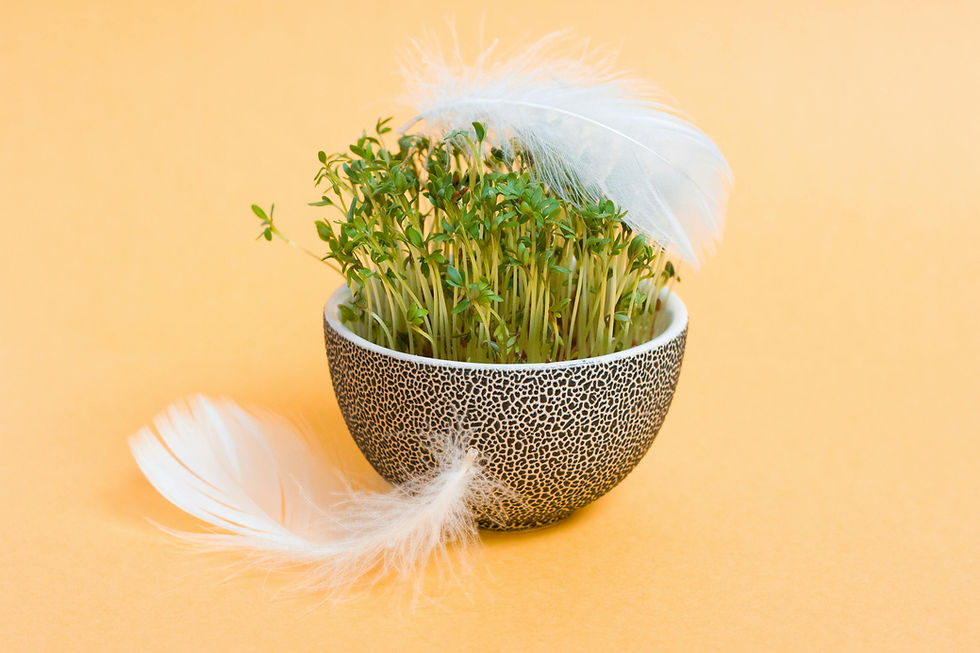How to Realistically Follow the Paleo Diet in Today’s World
- Dor Davidov

- Feb 19
- 4 min read
Updated: Oct 7

I get it—living truly Paleo in a world of GMO foods, hybridized crops, and nutrient-depleted soil can feel impossible. The reality is, we can’t exactly hunt wild animals daily or forage in untouched forests. But you can still apply the principles of ancestral eating in a way that works in today’s world—without compromising your health.
Let’s break it down into realistic, practical steps so you can thrive on a modern Paleo diet despite all the challenges.
1. Choose the Least Tampered-With Foods (Even in Grocery Stores)
Even though almost everything has been hybridized, some foods remain closer to their wild, original forms. You can make better choices even when shopping in modern supermarkets.
What to Buy Instead:
Meat & Protein: Choose grass-fed, pasture-raised, and wild-caught whenever possible. If budget is tight, prioritize organ meats (they’re more nutrient-dense and often cheaper).
Vegetables: Opt for heirloom varieties or locally grown produce. Dark leafy greens, wild mushrooms, and cruciferous veggies (broccoli, cabbage) are less hybridized.
Fruits: Wild or heirloom varieties are best. Berries, figs, and pomegranates are less modified than modern bananas or seedless grapes.
Healthy Fats: Extra virgin olive oil, avocado oil, and coconut oil are good choices, as they’re minimally processed.
Nuts & Seeds: Raw and organic is best—macadamias, walnuts, chia, and flax seeds retain their ancient qualities.
Avoid overly hybridized, mass-produced foods like giant seedless fruits, ultra-sweet GMO corn, and overly bred grains like wheat (which isn’t even Paleo anyway).
2. Source Food as Close to Nature as Possible
While you might not be able to hunt your own bison, you can still get high-quality, less-processed food sources.
Where to Shop & Source Food:
Farmer’s Markets – Get local, organic, non-GMO produce and pasture-raised meats.
Regenerative Farms – Many ranches offer direct shipping for grass-fed, ethically raised meats. Look for 100% grass-fed, no antibiotics, no soy/corn-fed livestock.
CSA Boxes – Community-supported agriculture delivers seasonal, organic produce.
Wild-Caught Seafood – Look for "wild" vs. "farm-raised" when buying fish.
Backyard & Local Food Sources – Grow your own food, raise chickens (if possible), or buy from friends and small-scale farmers.
🏹 Ultimate Paleo Move? Hunt or fish for your own meat (or find a hunter to source from). Venison, elk, and wild-caught fish are true ancestral foods!
3. Filter Out Hidden Toxins in "Healthy" Paleo Foods
Even organic foods today contain toxins due to soil depletion, water contamination, and pesticide drift. To make your Paleo diet truly powerful, you need to detoxify your food sources.
How to Reduce Toxins:
Wash ALL produce – Use a vinegar soak to remove pesticides. Even organic foods can have residues.
Filter water – Tap water contains fluoride, chlorine, and heavy metals—use a high-quality filter (like Berkey, AquaTru, or a reverse osmosis system).
Avoid plastic packaging – BPA and microplastics leach into food. Choose glass or stainless steel containers for storage.
Limit canned foods – Many cans are lined with BPA, even organic ones. Opt for fresh or frozen when possible.
4. Balance the Paleo Diet for Real Life
Strict "hardcore Paleo" isn’t always sustainable. Instead of an "all or nothing" mindset, aim for 80-90% Paleo while allowing flexibility when needed.
How to Stay Paleo Without Going Crazy:
Plan ahead – Prep meals with grass-fed meats, roasted veggies, and clean fats so you’re not stuck eating processed food in a pinch.
Use intermittent fasting – If high-quality food isn’t available, fasting can be better than eating low-quality options.
Allow occasional non-Paleo foods if they're high quality – For example, raw dairy, white rice (if tolerated), or soaked legumes can be less harmful than fake "Paleo" processed snacks.
Find Paleo-friendly restaurants – Stick to grilled meats, vegetables, and healthy fats when dining out.
5. The Lifestyle Component: Paleo is More Than Just Food
True Paleo living isn’t just about diet—it’s about how you move, breathe, sleep, and connect with nature.
Cold exposure – Take cold showers or ice baths for metabolic health.
Morning sunlight – Regulates circadian rhythm, boosts Vitamin D, and improves mood.
Functional movement – Sprint, lift, stretch, and walk often—just like our ancestors did.
Grounding (barefoot walking) – Reduces inflammation and reconnects you with nature.
Deep breathing – Helps reduce stress and supports digestion.
Final Thoughts: Thriving on Paleo in a Modern World
Yes, we live in a world filled with GMOs, toxins, and artificial foods—but that doesn’t mean you can’t reclaim ancestral health.
By focusing on whole, unprocessed, seasonal foods, sourcing from local and ethical providers, and implementing key lifestyle principles, you can thrive on a Paleo diet today.
Next Steps:
1) Swap one processed food for a whole Paleo alternative today.
2) Find a new clean food source (local farm, grass-fed butcher, wild seafood supplier).
3) Start a Paleo lifestyle habit (barefoot walking, cold showers, sun exposure).
Your body was built for this. Eat, move, and live like your ancestors—and feel the difference.
Exhausted and foggy? Learn How To Gain all-day energy and sharp focus
no diets, no intense workouts, no endless supplements!
Disclaimer: This article is for general informational purposes only and reflects personal opinions, not medical advice. Consult your healthcare provider before making any health-related decisions. See our full Disclaimer for details.




Comments